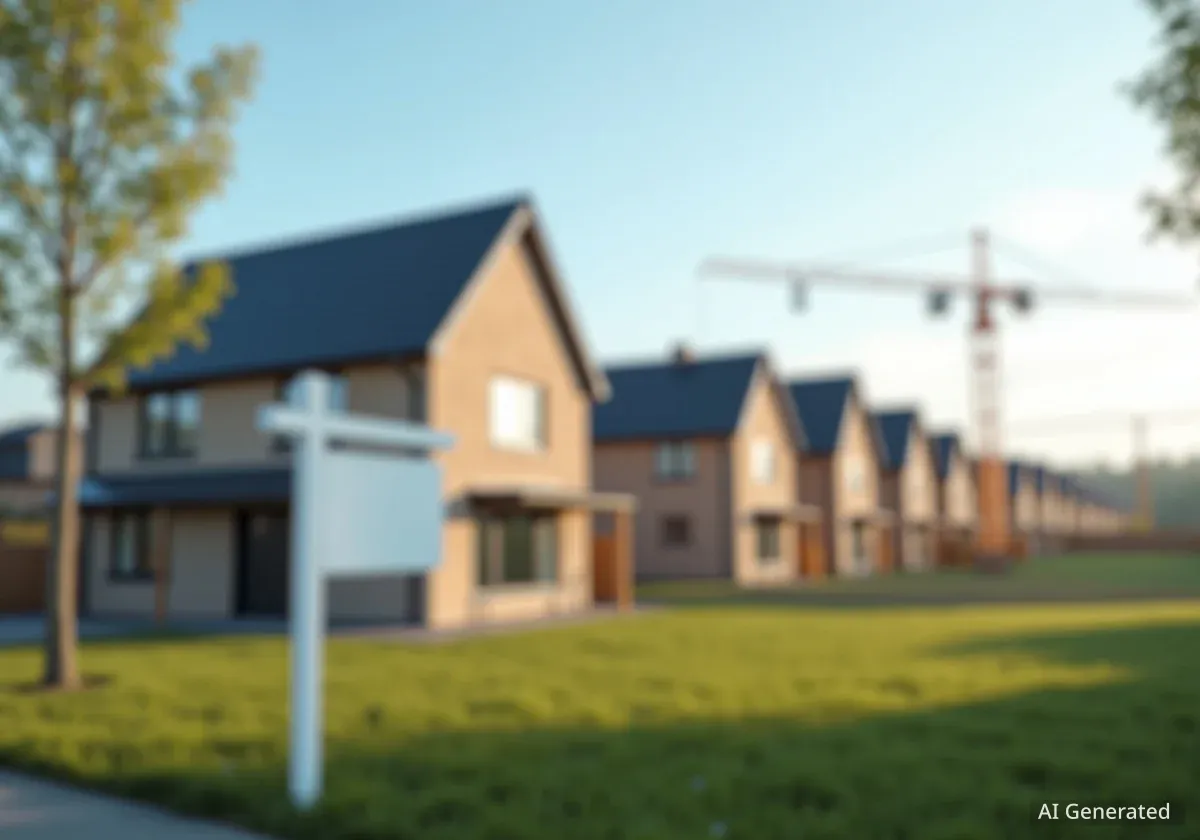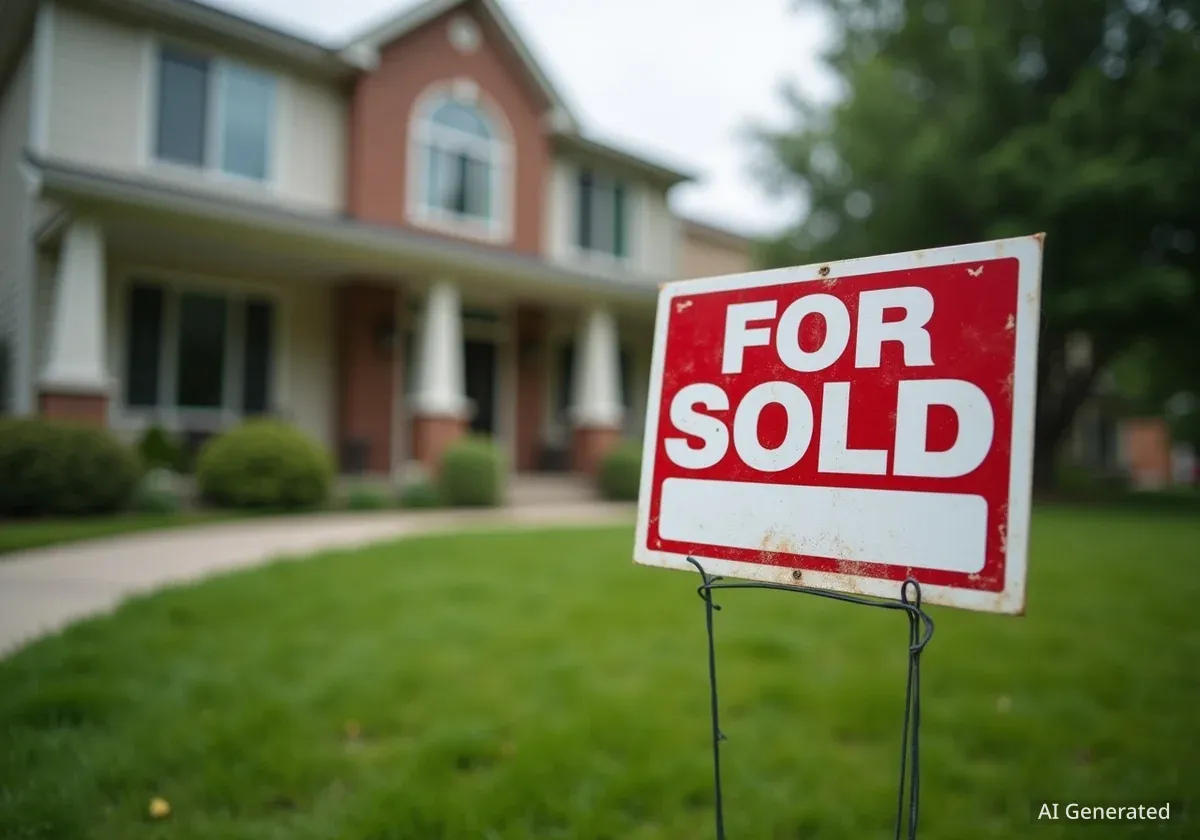The United States housing market is showing preliminary signs of renewed activity this fall after a slow summer season. According to the latest data from the National Association of REALTORS® (NAR), a combination of decreasing mortgage rates and a slight increase in available homes is drawing some buyers back into the market, suggesting a potential shift in momentum.
While existing-home sales remained nearly flat in August with a minor 0.2% decrease from July, they were still 1.8% higher than the same period last year. This stability, coupled with rising buyer demand indicators, points toward a more active market in the coming months.
Key Takeaways
- Mortgage rates have recently fallen below 6.5%, prompting an 18% year-over-year jump in home purchase loan applications.
- Housing inventory increased by approximately 12% in August compared to the previous year, giving buyers more options.
- The median existing-home price rose 2% year-over-year to $422,600, showing continued price resilience.
- Experts suggest a "second spring market" could emerge this fall, with buyers potentially gaining more negotiating power.
Shifting Dynamics in the US Housing Market
After several months of sluggish activity, the housing market appears to be at a turning point. Elevated mortgage rates and a shortage of available homes have kept many potential buyers on the sidelines. However, recent changes are creating a new environment for the fall season.
Lawrence Yun, chief economist for the National Association of REALTORS®, commented on the current conditions. He noted that while sales have been slow, the outlook is improving.
"Home sales have been sluggish over the past few years due to elevated mortgage rates and limited inventory. However, mortgage rates are declining, and more inventory is coming to the market, which should boost sales in the coming months."
This sentiment suggests that the market is transitioning from a period of stagnation to one of potential growth, driven by more favorable financial conditions for buyers.
Lower Mortgage Rates Fuel Buyer Interest
A primary catalyst for the renewed optimism is the recent drop in mortgage rates. The average rate for a 30-year fixed-rate mortgage has retreated from highs near 7% earlier in the year to below 6.5%. This decrease has a direct impact on affordability and buyer confidence.
Data from the Mortgage Bankers Association confirms this trend. In the past week, mortgage applications for home purchases surged by 18% compared to the same week last year. This significant increase is a strong indicator that financially prepared buyers are actively monitoring the market and are ready to act when conditions improve.
Application Surge
The 18% year-over-year increase in mortgage applications highlights a reservoir of pent-up demand. Even small decreases in interest rates can translate into significant savings over the life of a loan, making homeownership more accessible for many.
While demand is rising, the market pace remains more measured than in previous years, providing a less frenzied environment for those looking to purchase a home.
Increased Inventory Offers More Options for Buyers
One of the most significant challenges for buyers over the past few years has been the lack of available homes. This is beginning to change, with housing inventory levels in August rising about 12% from a year ago.
In addition to more listings, homes are staying on the market longer. The median time a property was on the market in August was 31 days, an increase from 26 days a year earlier. This slower pace reduces pressure on buyers and allows for more thorough decision-making.
A Window for First-Time Buyers?
These changing conditions could provide an opening for first-time homebuyers, who have been disproportionately affected by high prices and competition. They accounted for just 28% of sales in August, far below the historical average of 40%. While affordability remains a hurdle, increased inventory and negotiating power could help more enter the market.
Alexa Kebalo, a real estate professional with eXp Realty, described the current environment as a "second spring market." She observed a spike in listings and noted that buyers are finding more properties to choose from.
"We’ve actually been able to negotiate more. It feels more hopeful right now for buyers than what we’ve seen in the past."
Kebalo added that inspections and repair requests, which were often waived in more competitive markets, are now more common, indicating a shift in leverage toward the buyer.
Home Prices Remain Strong Amid Market Changes
Despite the increase in inventory and a slower sales pace, home values have remained resilient. The median sales price for an existing home in August was $422,600, a 2% increase from the previous year. This demonstrates continued underlying strength in the market.
Distressed sales, such as foreclosures and short sales, made up only 2% of transactions, which is a historically low figure. This indicates that homeowners are, on average, in a strong financial position.
Homeowner Equity Growth
According to NAR research, the average American homeowner has seen their home equity grow substantially. Over the last five years, the typical homeowner has gained approximately $140,900 in housing wealth, reflecting a cumulative price appreciation of 49% between mid-2019 and mid-2024.
This substantial equity is enabling some homeowners to make all-cash purchases. In August, cash buyers accounted for 28% of all transactions, a historically high share that continues to influence market dynamics.
A Regional Look at Housing Market Performance
Housing market conditions varied significantly across the country in August. The performance in each region was largely influenced by local inventory levels and affordability.
Regional Breakdown for August
- Northeast: Sales saw a 4% monthly decline. The median price, however, climbed 6.2% year-over-year to $534,200, one of the steepest increases in the nation due to tight inventory.
- Midwest: This region was a top performer, with sales rising 2.1% for the month. With a median price of $330,500 (up 4.5% year-over-year), it remains one of the most affordable areas in the country.
- South: Sales dipped slightly by 1.1% from July but were still up 3.4% from a year ago. The median price was $364,100, showing a modest 0.4% annual gain.
- West: Sales increased by 1.4% month-over-month. The median price in the West was $624,300, a slight 0.6% rise compared to the previous year.
The Midwest's combination of rising sales and relative affordability highlights its strength, while the Northeast's high price appreciation underscores its persistent inventory challenges.





